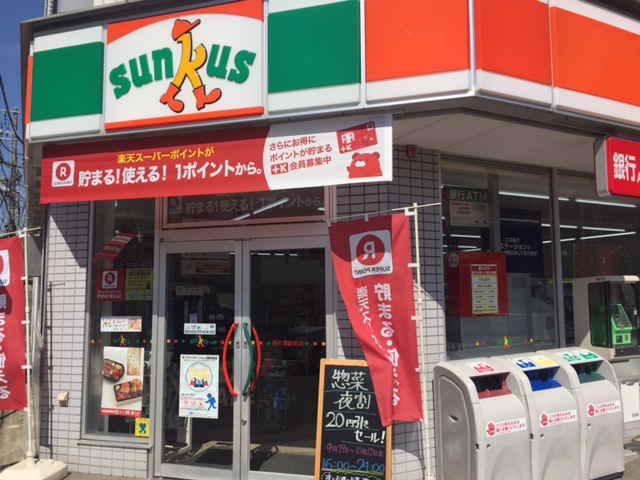Food
Washoku
Traditional Japanese food called "Washoku(和食)" was added to UNESCO's Intangible Cultural Heritage in November 2013.
An important thing in Washoku is taking full advantage of seasonal ingredients.
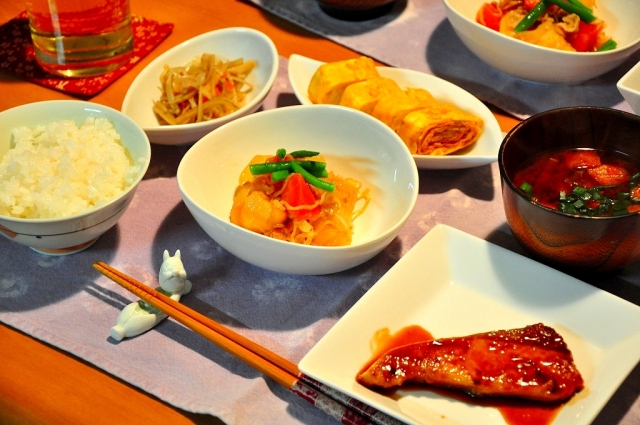
Japanese cuisine is based on combining the staple food which is steamed white rice or gohan (御飯) with one or several okazu or main dishes and side dishes. This may be accompanied by a clear or miso soup and tsukemono (pickles).
Typical Japanese Food
◦Sushi
 Sushi consists of cooked vinegared rice combined other ingredients, seafood, vegetables. It is often prepared with raw seafood, but some common varieties of sushi use cooked ingredients. Raw fish (or occasionally other meat) sliced and served without rice is called "sashimi".
Sushi consists of cooked vinegared rice combined other ingredients, seafood, vegetables. It is often prepared with raw seafood, but some common varieties of sushi use cooked ingredients. Raw fish (or occasionally other meat) sliced and served without rice is called "sashimi".
Sushi is often served with pickled ginger (ガリ gari), wasabi, and soy sauce.
◦Temupra
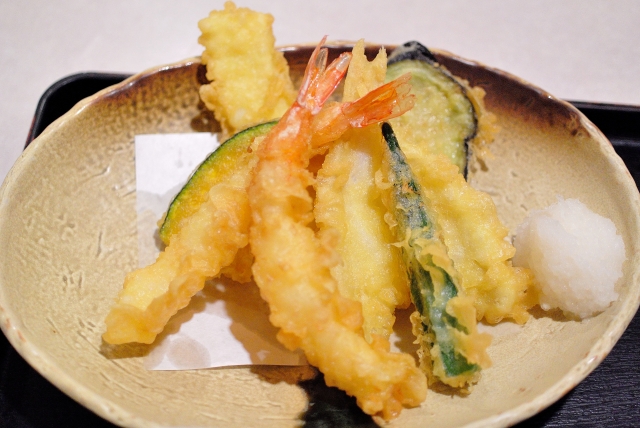 Tempura (天ぷら) is a Japanese dish of seafood or vegetables that have been battered and deep fried.
Tempura (天ぷら) is a Japanese dish of seafood or vegetables that have been battered and deep fried.
◦Soba
 Soba (そば・蕎麦) is the Japanese name for buckwheat.It is synonymous with a type of thin noodle made from buckwheat flour, and in Japan can refer to any thin noodle (unlike thick wheat noodles, known as udon). Soba noodles are served either chilled with a dipping sauce, or in hot broth as a noodle soup.
Soba (そば・蕎麦) is the Japanese name for buckwheat.It is synonymous with a type of thin noodle made from buckwheat flour, and in Japan can refer to any thin noodle (unlike thick wheat noodles, known as udon). Soba noodles are served either chilled with a dipping sauce, or in hot broth as a noodle soup.
You can slurp noodles in Japan. It is the best way to enjoy soba or ramen. But we don't slurp pasta.
◦Ramen
 Ramen consists of Chinese-style wheat noodles served in a meat- or (occasionally) fish-based broth, often flavored
with soy sauce or miso, and uses toppings such as sliced pork,
dried seaweed (海苔・nori), kamaboko, and green onions.
Ramen consists of Chinese-style wheat noodles served in a meat- or (occasionally) fish-based broth, often flavored
with soy sauce or miso, and uses toppings such as sliced pork,
dried seaweed (海苔・nori), kamaboko, and green onions.
◦Okonomiyaki
 Okonomiyaki (お好み焼き) is a Japanese savoury pancake containing a variety of ingredients. The name is derived from the word okonomi, meaning "what you like" or "what you want", and yaki meaning "grilled" or "cooked" (cf. yakitori and yakisoba). Okonomiyaki is mainly associated with the Kansai or Hiroshima areas of Japan, but is widely available throughout the country. Toppings and batters tend to vary according to region. Tokyo okonomiyaki is usually smaller than a Hiroshima or Kansai okonomiyaki.
Okonomiyaki (お好み焼き) is a Japanese savoury pancake containing a variety of ingredients. The name is derived from the word okonomi, meaning "what you like" or "what you want", and yaki meaning "grilled" or "cooked" (cf. yakitori and yakisoba). Okonomiyaki is mainly associated with the Kansai or Hiroshima areas of Japan, but is widely available throughout the country. Toppings and batters tend to vary according to region. Tokyo okonomiyaki is usually smaller than a Hiroshima or Kansai okonomiyaki.
Tableware
In Japan, chopsticks are used to eat food. If you can not use chopsticks well in the restaurant, you can ask a waiter to bring a spoon.
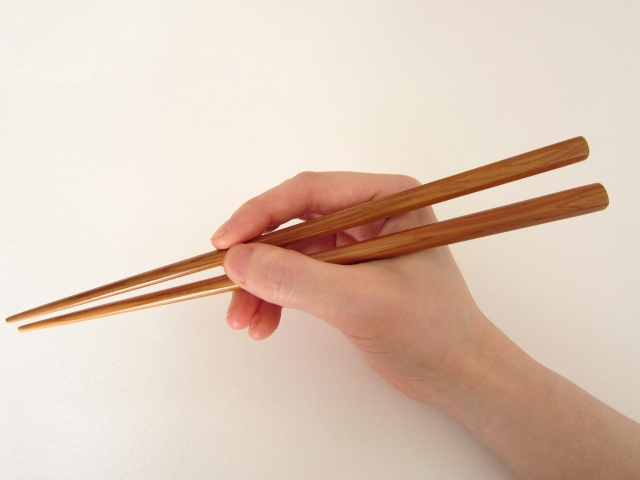 When you eat rice (or miso soup), a rice bowl (or a miso soup bowl) should be held in japanese manners.
When you eat rice (or miso soup), a rice bowl (or a miso soup bowl) should be held in japanese manners.

Restaurants in Nishi-Chiba
There are some restaurants near the Nishi-Chiba campus.

Typical prices are as follows.
◦Ramen 700~900 yen
◦Hamburger 220~600 yen
◦Curry 500~1000 yen
◦Pasta 700~1200 yen
◦set menu 650~800 yen
◦sushi 2000~3000 yen
Tip is not necessary.
Usually, restaurant is open untill 9 or 10 pm. some restaurants are open until much later.
Refectory
There is a food court in the University.
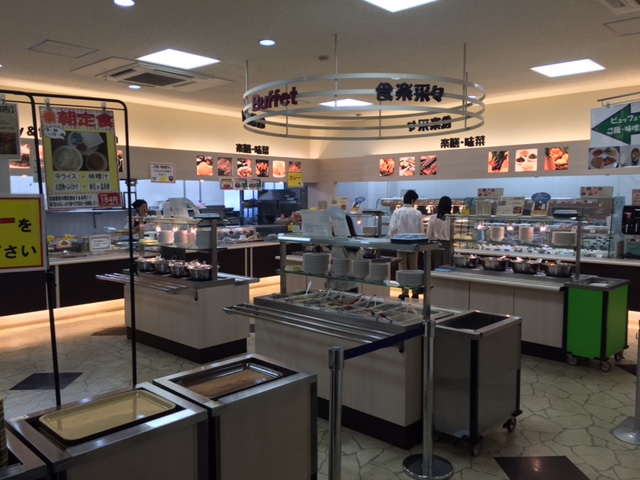 It is open from 9:30 am to 6:30 pm on week days. You can get an inexpensive meal. You can take halal meal here.
It is open from 9:30 am to 6:30 pm on week days. You can get an inexpensive meal. You can take halal meal here.
Convenience store
There are many convenience stores in Japan. Usually they are open 24 hours. You can buy foods or drinks there.
